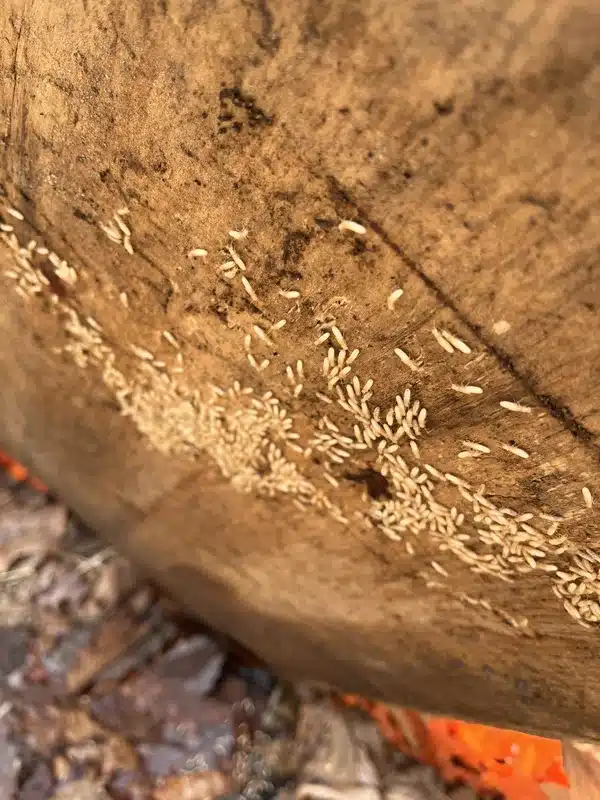Finding termites in your firewood can be alarming, but it doesn’t always mean disaster. As someone who’s spent years helping homeowners deal with termite issues, I’ve learned that understanding the difference between normal termite activity and a serious threat can save you both stress and money.
The key is knowing when termites in firewood are just nature doing its job versus when they pose a real risk to your home. Let me walk you through everything you need to know about termites in firewood and how to protect your property.
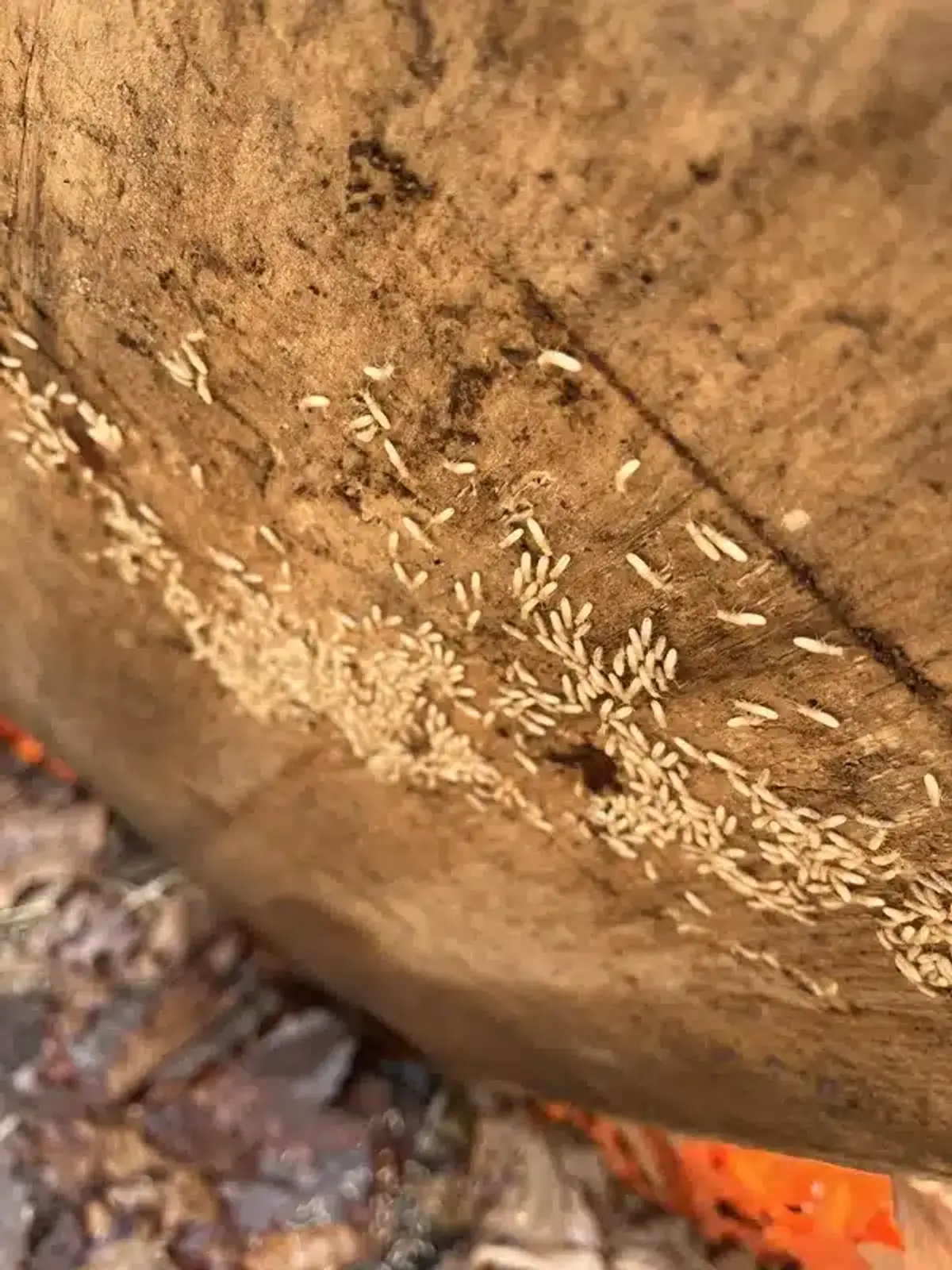
Understanding Termites and Dead Wood
Termites are nature’s recyclers. They break down dead wood and organic matter, which means finding them in firewood is actually pretty normal. The eastern subterranean termites common in our area feed on cellulose found in wood, whether it’s a fallen log or part of your home’s structure.
Here’s what many homeowners don’t realize: termites can’t tell the difference between firewood and your house. What matters to them is access and moisture. These termites live in soil-based colonies and must return frequently to their moist nest to survive.
What does the science say?
According to the University of Maryland Extension, eastern subterranean termites maintain a strict dependence on their soil-based colonies. These termites must return to their underground nest regularly to obtain moisture and nutrients essential for survival. This biological requirement means individual termites separated from their colony - such as those accidentally brought indoors with firewood - quickly dehydrate and die without establishing new infestations.
The good news? Individual termites brought indoors with firewood typically die quickly without soil contact. They can’t establish new colonies in your home’s structural wood unless they maintain a connection to their underground nest.
Case Study: When a Small Window Bulge Revealed Major Termite Damage
During my training in Alexandria, we responded to what seemed like a minor issue - homeowners noticed a small bulge in their window sill. What we discovered changed everything I thought I knew about termite activity and the importance of proper firewood storage.
- Initial sign: A barely visible bulge in the window sill
- What we found: Termites had eaten right up to the paint layer
- The source: Firewood stored directly against the crawl space door
- The pathway: Termites used the wood pile as a highway into the home
- Extent of damage: Thousands of dollars in structural harm that could have been prevented
This experience taught me why understanding proper storage distance and maintaining regular inspections are so critical for protecting your biggest investment.
Recognizing Termite Activity in Your Wood Pile
During my training years, I learned how important it is to spot the subtle signs of termite activity early. Early detection can prevent thousands of dollars in damage and save homeowners from extensive repairs.
When inspecting your firewood for termites, look for these key warning signs:
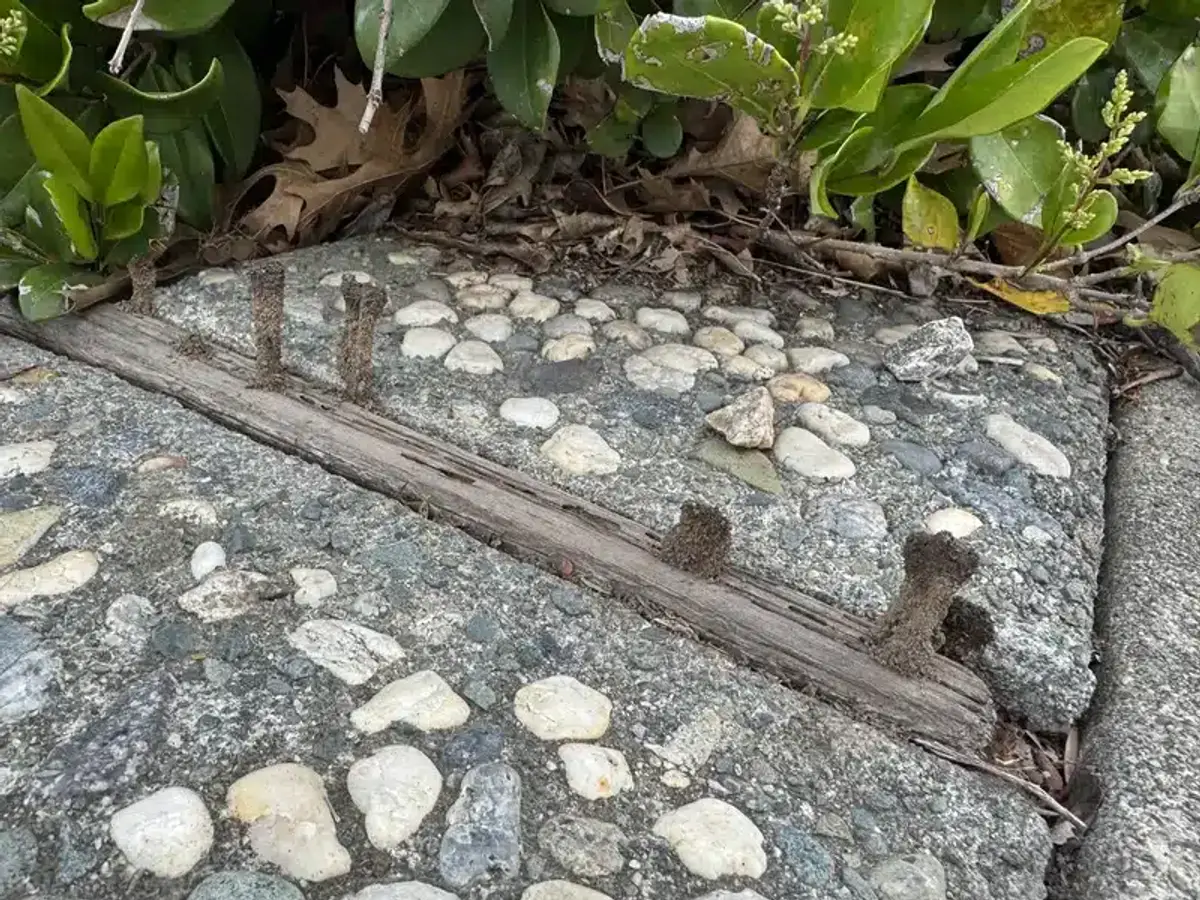
Mud Tubes and Shelter Tubes
These pencil-thick tunnels made of soil and saliva appear along log surfaces. Termites use them to travel while staying protected from air and light. If you see mud tubes connecting your wood pile to your house, that’s a red flag.
Mud-Lined Galleries
When you split a log and find hollow sections packed with soil, you’ve discovered termite highways. These galleries show where termites have been feeding and moving through the wood.
Live Termites
You might spot creamy-white worker termites about ¼ inch long, or tan-colored soldiers with rectangular heads. Finding a few workers isn’t unusual, but large numbers indicate an active colony nearby.
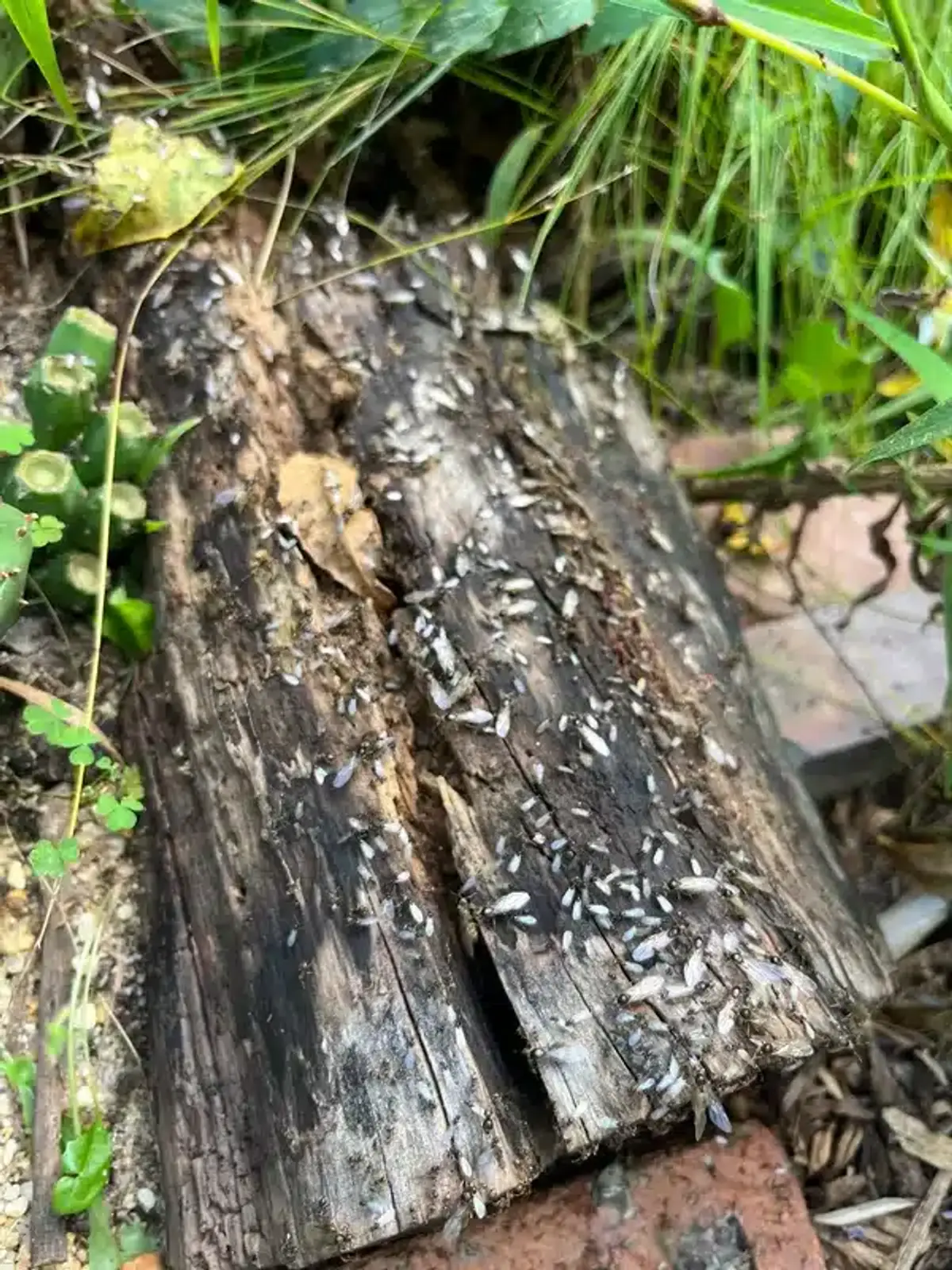
Winged Swarmers
Piles of discarded wings around your wood pile during spring months signal that reproductive termites have emerged. This usually means the colony has been established for years.
When to Worry vs. Normal Occurrence
Not every termite discovery requires panic. Through helping over a hundred customers with termite-related issues, I’ve learned to distinguish between normal situations and genuine threats.
Low-Risk Situations
Consider it normal when you find termites only after splitting or moving logs, with the colony clearly in the ground rather than your home. Individual termites brought indoors with logs you’ll burn immediately pose minimal risk since they’ll die without soil contact.
Red-Flag Scenarios
Worry when your wood pile sits directly against your foundation or when you see continuous mud tubes bridging from the pile to your home’s siding. If you’re also noticing signs indoors like wing piles or sagging floors, call a professional immediately.
As we saw in the Alexandria case study above, even seemingly minor storage mistakes can lead to thousands of dollars in structural damage when termites use firewood piles as pathways into homes.
When to Call Professionals
Contact a termite specialist immediately if you see mud tubes connecting your wood pile to your home, find termites in multiple areas around your property, or notice indoor signs like discarded wings or sagging floors.
Proper Firewood Storage Methods
The best defense against termites in firewood becoming a home invasion is smart storage. Based on recommendations from the Purdue University Extension, here’s how to store wood responsibly:
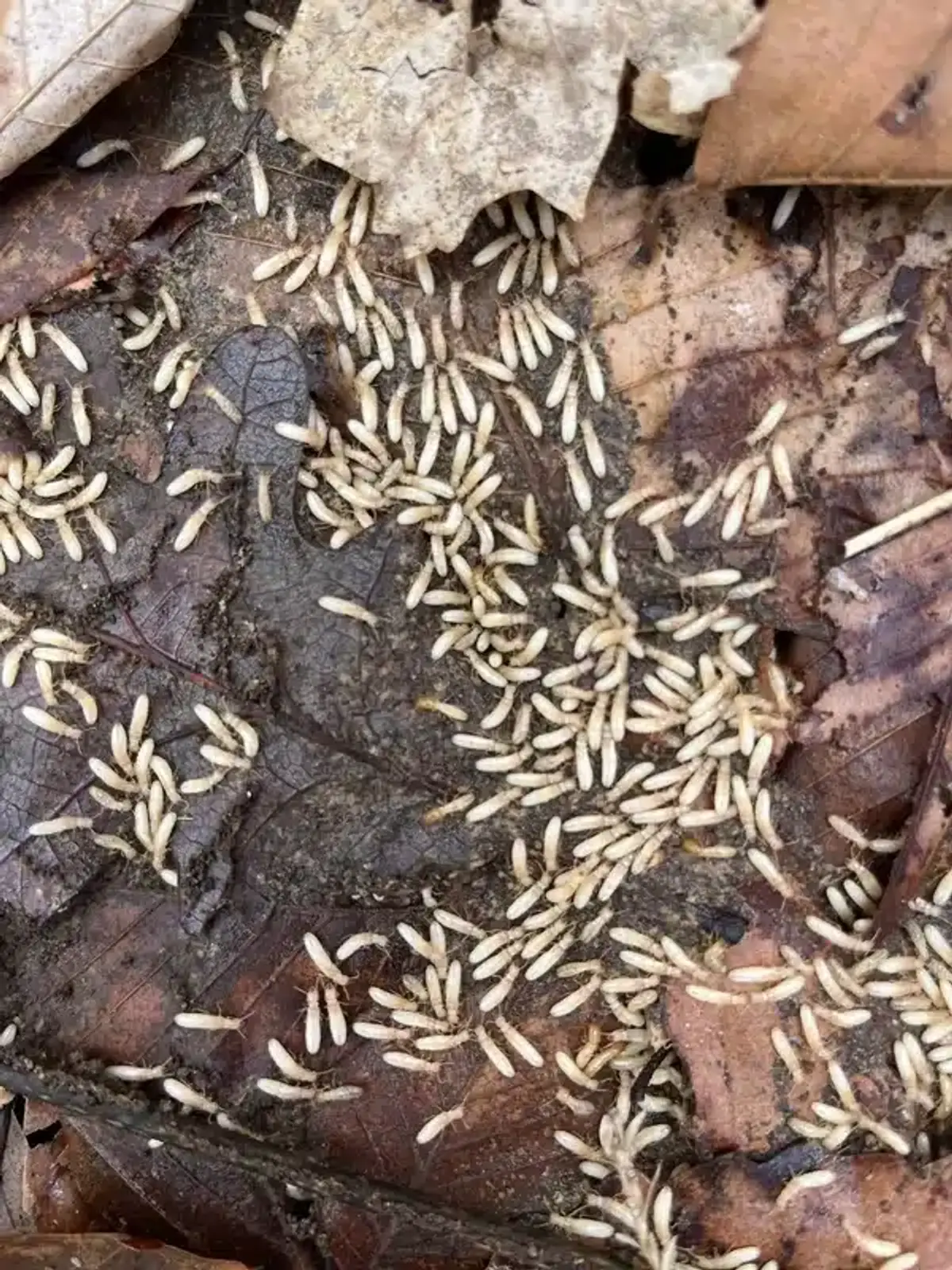
Distance and Placement
Keep your firewood at least 3 feet from any structure, though 20-30 feet is better in high-risk areas. This distance prevents termites from easily bridging from your wood pile to your home.
Maintain a clear 6-inch inspection gap between soil and your home’s siding. This lets you spot any mud tubes before they become serious problems.
Elevation is Key
Never stack wood directly on the ground. Use cinder blocks, metal racks, or wooden stringers to elevate your pile. This breaks soil contact and improves airflow, making the environment less attractive to termites and other pests.
Smart Covering Techniques
Cover only the top of your wood pile. Tarps that drape to the ground trap moisture and create perfect termite habitat. A simple roof or partial cover works much better than full wrapping.
Essential Firewood Storage Steps
- Distance Rule: Store firewood at least 3 feet from structures, preferably 20-30 feet in high-risk areas
- Elevation Required: Use cinder blocks, metal racks, or wooden stringers to lift wood off the ground
- Smart Covering: Cover only the top to allow airflow while preventing moisture buildup
- Inspection Gap: Maintain 6-inch clearance between soil and your home’s siding for easy monitoring
Creating Termite Barriers Between Wood and Structures
Physical barriers can provide extra protection against termite bridges. Consider these professional-grade solutions:
Gravel and Sand Barriers
Install 3-4 inch layers of coarse gravel or sand under your storage racks. These particle barriers create an effective physical deterrent against termite movement.
What does the science say?
Research from the Oak Ridge National Laboratory demonstrates that particle barriers using gravel or sand sized 1.7-2.8 mm create effective physical barriers against eastern subterranean termites. The termites cannot move these larger particles to construct their tunnels, making this a proven non-chemical approach to termite control around structures and storage areas.
Professional Monitoring Systems
For homeowners in high-risk areas, installing termite monitoring stations around storage areas provides early warning of colony activity. These systems can catch problems before they reach your home.
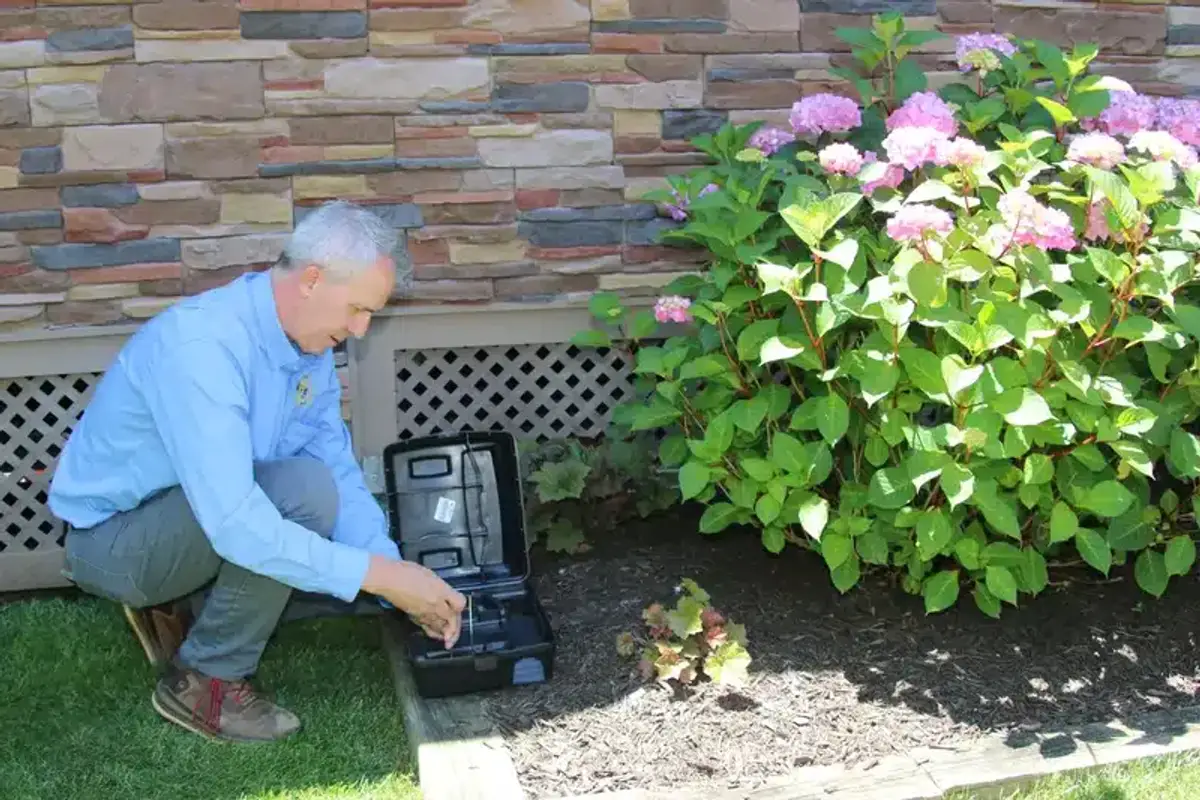
Seasonal Termite Inspection Recommendations
Regular inspections help you stay ahead of termite problems. Here’s my recommended schedule based on years of field experience:
Spring Inspections (March-May)
Look for swarmer wings and fresh mud tubes. This is peak termite activity season, so check both your wood pile and the surrounding area for new signs of activity.
Summer Monitoring
Inspect the base of your pile for soil sheeting while rotating older wood forward. Summer’s heat and humidity create ideal conditions for termite expansion.
Fall Preparation
Rebuild or relocate stacks after splitting new wood. Verify that proper distance and elevation are maintained as you prepare for winter burning season.
Winter Handling
Knock or brush each log outside before bringing it indoors. Keep only a one-day supply inside your home to minimize risk from any hitchhiking termites.
Inspecting Firewood Before Bringing It Inside
Before you carry any firewood indoors, take a moment to inspect each piece. Look for obvious signs like termite pellets or mud tubes along the bark.
Tap the wood with a hammer or your knuckles. Hollow sounds might indicate termite damage, though this isn’t always reliable since dry wood can sound hollow naturally. Pay special attention to any unusual damage patterns that might suggest pest activity.
Check for live insects crawling on or near the wood. Besides termites, you might encounter carpenter ants or other wood-boring beetles that can also cause problems if brought indoors.
Treatment Considerations for Termites in Firewood
If you discover termites in firewood, resist the urge to spray the pile with insecticides. The Iowa State University Extension warns that treating firewood with chemicals creates toxic fumes when burned.
Instead, focus treatment efforts on the soil around your home’s foundation if termites are bridging from the wood pile. For serious infestations, professional liquid treatments may be necessary to create a protective barrier.
Consider having infested wood professionally heat-treated off-site if you want to salvage it. The process requires heating wood to 60°C for 60 minutes to eliminate all pest activity.
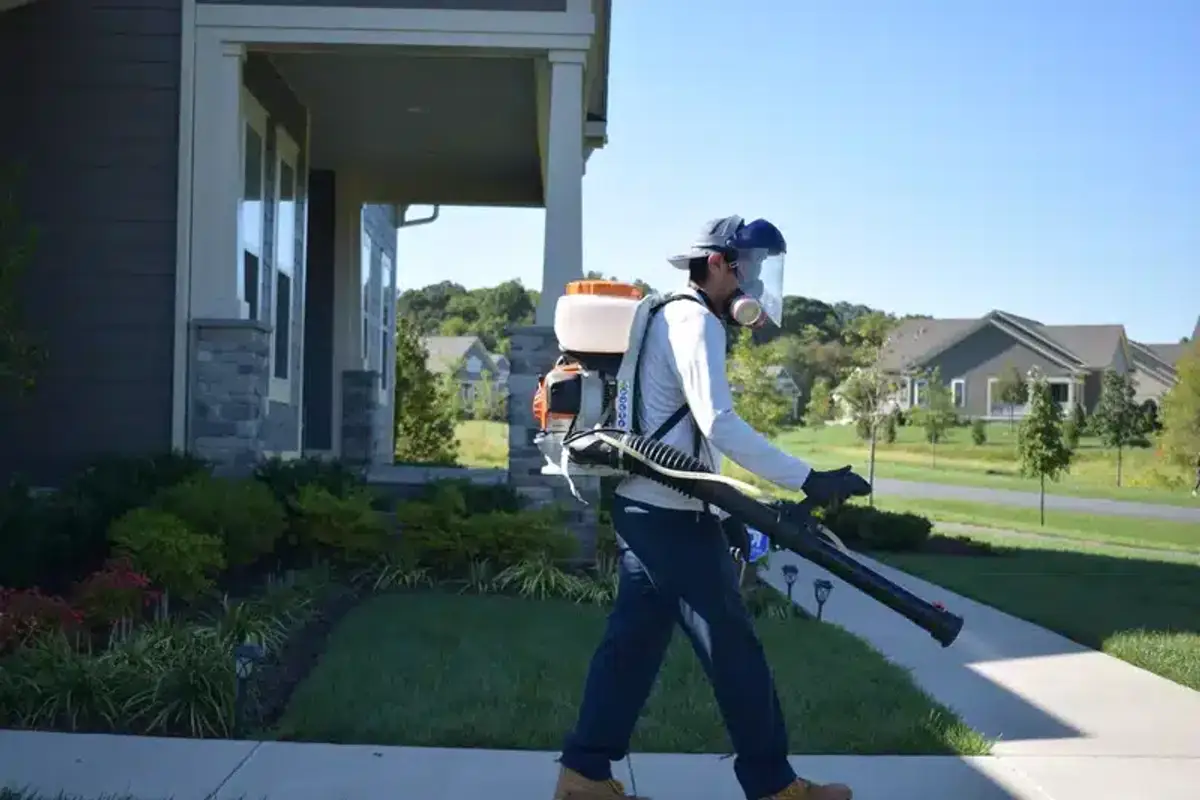
Burning Infested Wood Responsibly
Burning is actually one of the most effective ways to eliminate termites in wood. Once log temperatures exceed 120°F, termites and most other firewood insects die quickly.
Before burning, shake or knock logs outdoors to dislodge any clinging pests. If you notice insects inside your home after bringing in wood, simply vacuum or sweep them up - chemical sprays aren’t necessary for these isolated individuals.
Make sure your fireplace or wood stove has proper ventilation. While burning termite-infested wood is generally fine, good airflow prevents any potential issues with smoke or odors.
Alternative Firewood Storage Solutions
If traditional ground-level storage isn’t working for your situation, consider these alternatives:
| Ground-Level Racks | Elevated Shed | Heat-Treated Bundles | |
|---|---|---|---|
| Termite Risk | Moderate | Low | Minimal |
| Initial Cost | $50-150 | $500-2000 | Premium pricing |
| Maintenance | Regular inspection | Structural upkeep | None required |
| Best For | Most homeowners | Large quantities | High-risk areas |
Elevated Shed Storage
A dedicated wood shed with proper ventilation keeps your firewood dry while maintaining distance from your home. Follow EPA guidelines for shed design to ensure adequate airflow.
Portable Rack Systems
Metal or treated lumber racks can be moved seasonally. Store wood further from your house during summer months when termites are most active, then move closer for winter convenience.
Commercial Heat-Treated Wood
For high-risk situations, consider purchasing certified heat-treated bundles. While more expensive, this eliminates pest concerns entirely.
Professional Termite Help and Long-Term Protection
Sometimes the best approach is getting professional help. If you’re seeing mud tubes connecting your wood pile to your home, or if you’ve found live termites in multiple areas, it’s time to call in experts.
Our team has helped hundreds of homeowners deal with firewood-related termite concerns. We focus on treating the source - the soil around your home - rather than just the wood pile itself.
For ongoing protection, consider a termite monitoring program that includes regular inspections of storage areas. This proactive approach catches problems early when they’re easiest and least expensive to address.
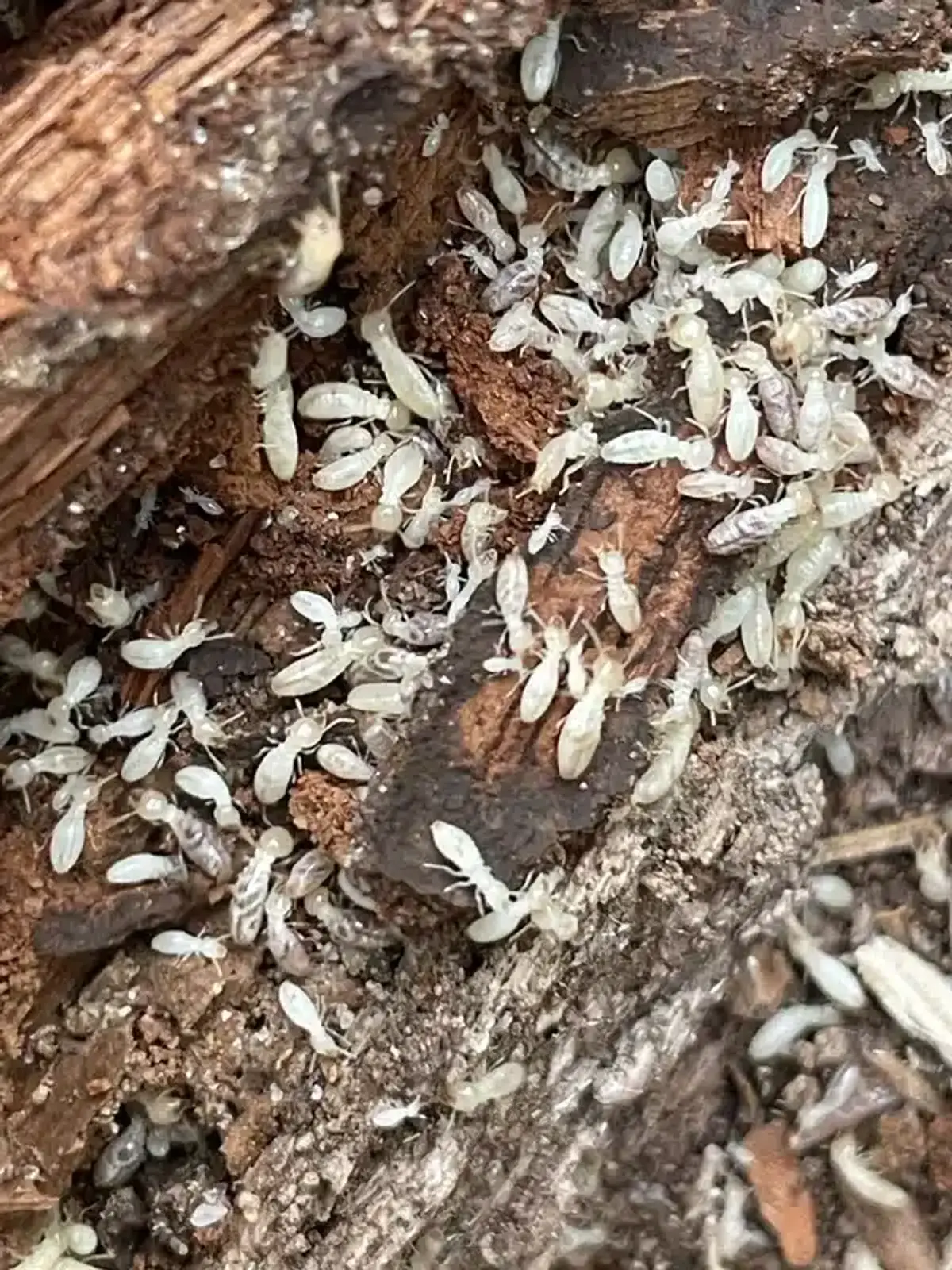
Remember, finding termites in firewood doesn’t have to mean disaster for your home. With proper storage, regular inspections, and quick action when needed, you can enjoy your fireplace while keeping your property protected. The key is staying vigilant and understanding when you’re dealing with normal termite activity versus a serious threat.
If you’re concerned about termites in your firewood or want professional guidance on proper storage techniques, don’t hesitate to reach out. Call us at 703-683-2000 or email info@bettertermite.com for expert advice tailored to your specific situation.
Frequently Asked Questions
Answers to the most common concerns about termites in firewood.
Can termites in firewood infest my house?
+
Termites found in firewood typically can't establish new colonies in your home without maintaining soil contact. However, if your wood pile is stored against your foundation, termites can use it as a bridge to access your home's structural wood. Proper storage at least 3 feet from structures prevents this problem.
Is it normal to find termites in stored firewood?
+
Yes, finding termites in firewood is completely normal. Termites are nature's decomposers and naturally feed on dead wood. The concern arises when your wood storage creates a pathway for termites to reach your home's foundation or structural elements.
Should I spray my firewood pile for termites?
+
No, don't spray firewood with insecticides. Burning treated wood can release toxic fumes, and surface sprays rarely reach termite galleries inside the logs. Instead, focus on proper storage techniques and treat the soil around your home if termites are bridging to your foundation.
How far should I store firewood from my house?
+
Store firewood at least 3 feet from any structure, though 20-30 feet is better in areas with high termite pressure. This distance prevents termites from easily creating mud tube bridges from your wood pile to your home.
Can I burn wood that has termites in it?
+
Yes, burning termite-infested wood is perfectly fine and actually eliminates the termites. Once wood reaches temperatures above 120°F, termites die quickly. Just shake logs outside before bringing them in to remove any clinging insects.
What do termite mud tubes look like on firewood?
+
Termite mud tubes appear as pencil-thick tunnels made of soil and termite saliva along log surfaces. They're usually brown or tan colored and feel firm when dry. These tubes allow termites to travel while staying protected from air and light.
How do I prevent termites from getting into my firewood?
+
Elevate your wood pile off the ground using cinder blocks or metal racks, store it away from your house, and keep it properly ventilated. Cover only the top to prevent moisture buildup, and inspect regularly for signs of termite activity.
With five years of hands-on experience in the pest control industry, George Schulz is a registered technician with the Virginia Pest Management Association and a proud third-generation professional in a family business that’s been protecting homes for over 57 years. He manages and trains a team of service pros while also leading internal research efforts—recently spearheading a deep-dive review of thousands of documents on pest control materials to hand-pick the most kid and pet friendly, most effective solutions tailored specifically for homes in the DC metro area.
